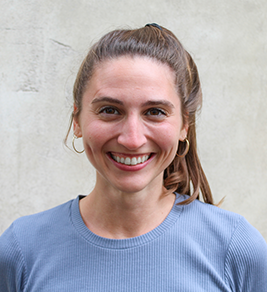Lisa is a creative and critical thinker who dwells on social and cultural questions related to urban spaces. Her academic and professional experience has included mixed-methods research in topics such as urban design, identity and movement (mobility, migration, tourism), nature in cities, and urban planning language. She also has a background in editorial work.
Research Fellow
Lisa Rohrer
Spatial Story
About halfway through the sweeping tale of Les Miserables, Victor Hugo makes a passing yet profound remark: “In Paris, to change the street in which one lives is to change one’s identity.” In this condensed statement, he draws attention to the intimacy of our urban environments. Here, along the slimmest elements of a map, exist some of the most personal impressions and markers of ourselves. Where we live, in which kind of housing, how we move along our streets, and how we access other boulevards, alleys, passages, and parks, gives weight to who we are or who we may become.
The intersection of identity and the built environment has often emerged in my life, both professionally and personally. First, the questions came as a response to my childhood, growing up in a cul-de-sac community in the United States. At university, I studied media landscapes—where Benedict Anderson’s “imagined communities” first provoked my interest in public life—and American studies—where courses on performance, power, class, labour, and consumption challenged my perceptions of the world and my place in it. The setting of my education, among Thomas Jefferson’s neo-classical architecture and design in Charlottesville, further shaped my interest in how the environments we inhabit inform our behaviour, movement, and thought.
After graduating, I became obsessed with a new set of questions—questions about the role of urban design and third spaces while I worked at a study centre for students wrestling with existential and theological questions. I passed my spare time reading Jane Jacobs and Jan Gehl and observing cyclist and pedestrian behaviour from the street corners of Charleston, South Carolina. I also continued to carry with me questions about cities and hope, provoked by my enchantment with the Judeo-Christian narrative that progresses from a garden to a city.
In 2021, I moved to Stockholm via a 1-hour flight travelling west. This unique route is due to a key layover in my life—two years of study at the Estonian Academy of Arts in Tallinn. At the corner of Kotzebue tänav and Põhja puiestee, I was inspired by the complex provocations of critical geographers, philosophers, architectural historians, and cultural theorists which continue to interest and stimulate me today. I defended my thesis critically examining the discourse of urban vision documents from Stockholm, Copenhagen, and Helsinki.
In recent years, new questions have arisen as I make my home in Stockholm—a place that feels at once foreign and familiar. In my work at Nordregio, I have asked: how can planners balance densification with green space? What kinds of policies can support socially sustainable tourism? What does it mean to pursue justice within the green transition? Is it possible to improve the sustainability of cities and regions through the humble bicycle? These questions, and many more, structure my days as a research fellow, while I spend my evenings and weekends wandering through Stockholm in search of the perfect spots to bathe, jog, read, and write.
I have changed the street in which I live more than 15 times in the past 10 years alone. By Hugo’s standards, I ought to be in the midst of a dramatic identity crisis. But in all the cities I have lived, in all the streets I have labelled as home, I have been challenged by the incomplete identity they offer. Instead, I have learned to embrace the role of sojourner, of border-stalker—living along the edges of several place-based identities and cultures, even now as I confidently call Stockholm home.
